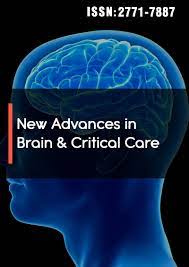Assessment of Hypoxic Ischemic Changes in Perinatal Asphyxia of First Ultasonogram of Brain
Abstract
Hossain MM, Khan AI, Islam I, Sarker DD, Sultana M
Background: In in perinatal asphyxia, hypoxic ischemic brain injury remains most serious condition causing significant mortality and long term morbidity. Early detection of intracranial changes and its consequences will enhance timely intervention and better out come. Cranial sonography can be done to assess the abnormalities of brain in perinatal asphyxia. Objectives: The objective of this study was to evaluate usefulness of assessment of Hypoxic Ischemic Changes in perinatal asphyxia of first Ultasonogram of Brain.
Methods: This was an observational study conducted from March 2018 to February 2019 at department of radiology and imaging, Dhaka Shishu Children Hospital, Dhaka, Bangladesh. Total 100 neonates with perinatal asphyxia were included in this study. Cranial USG was done in all cases and sonographic abnormalities were evaluated.
Result: This study was 56 term (>37 weeks of gestation) and 44 preterm (<37 weeks of gestation) newborn having birth asphyxia were taken as cases in this study. Common cranial sonographic findings of preterm babies were periventricular leukomalacia 29% (13), germinal matrix hemorrhage 14% (6), Intraventricular hemorrhage 11% (5) cerebral oedema 7% (3) and normal 39% (17). Common cranial USG findings in term babies were cerebral oedema 43% (24), intracerebral hemorrhage 5% (3), Focal cerebral infarct 4% (2), Intraventricular hemorrhage 2% (1) and normal 46% (26).
Conclusion: This study found that transcranial sonography is useful to identify the abnormalities in brain of asphyxiated neonate and helps to predict the neurodevelopmental outcome. So proper management plan can be done.




